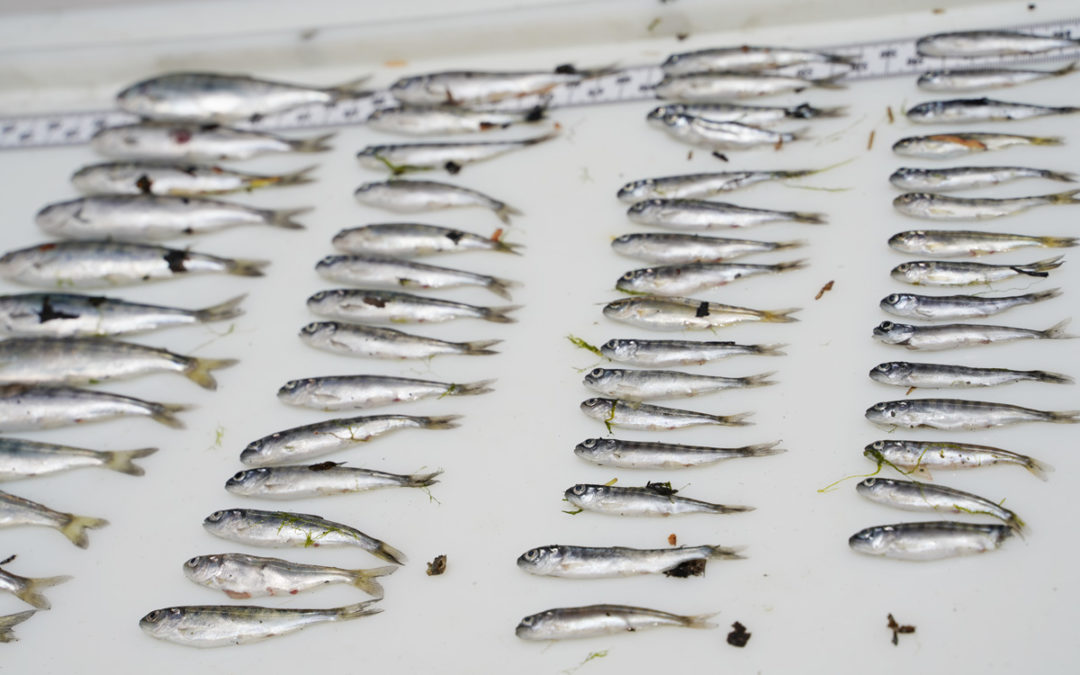SOURCE: High Country News
DATE: May 27, 2021
SNIP: The video shows clear river water washing over rocks as sunlight dances in the shallows. Small slivers of white that look like leaves float on the surface. But they aren’t leaves; they’re the bodies of juvenile salmon, most of them no longer than a finger, dead from a warm-water disease exacerbated by drought on the Klamath River. The caption to the video, filmed by Yurok Vice Chairman Frankie Joe Myers, is stark: “This is what climate change looks like when we don’t act.”
Fish have been dying on the Klamath since around May 4, according to the Yurok Tribal Fisheries Department. At that time, 97% of the juvenile salmon caught by the department’s in-river trapping device were infected with the disease C. shasta, and were either dead, or would die within days. Over a two-week period, 70% of the juvenile salmon caught in the trap were dead.
This spring, the Klamath Basin is already in extreme and exceptional drought — one of the worst drought years in four decades. Irrigators upriver from the fish kill were told in mid-May that for the first time since “A” Canal in the Klamath Project began operating in 1907, they would not receive any water from it. The irrigators say they need 400,000 acre-feet of water but this year, they will receive just 33,000 acre-feet from the Klamath Project — a historic low. The situation has put pressure on an embattled region already caught in a cyclical mode of crisis due to a drying climate. “For salmon people, a juvenile fish kill is an absolute worst-case scenario,” Myers said in a statement.
In a statement about this year’s drought, Klamath Irrigation District President Ty Kliewer said, “This just couldn’t be worse. The impacts to our family farms and these rural communities will be off the scale.”
Last summer was also dry, and farmers and their supporters held a tractor convoy to protest the lack of water and the Bureau of Reclamation’s allocation decisions. Meanwhile, the Yurok Tribe’s Boat Dance ceremony was cancelled because of low flows last August, and after a dry winter, heated litigation around water allocation persists. This week, several irrigators set up an encampment by the Klamath Project head gates, which have been forced open by irrigators during past droughts. “This drought is not a fluke event,” Yurok citizen and tribal counsel Amy Cordalis testified in a House hearing on the ongoing drought in the West this week. “It is part of a larger pattern of drought brought on by climate change. Climate change is no longer some vague future threat — we are seeing its effects happening now, in real time.”
Wet years used to be the norm, and dry years were uncommon, but in recent years that’s changed, especially since 2014, said Barry McCovey Jr., Yurok Fisheries Department director and Yurok citizen, who has studied fish disease on the Klamath for 20 years. This year’s drought is part of the new climate regime the basin is shifting into.

